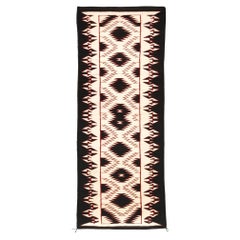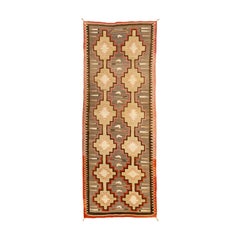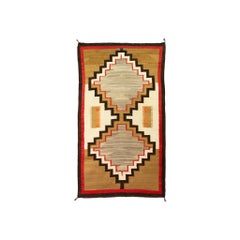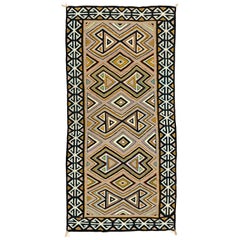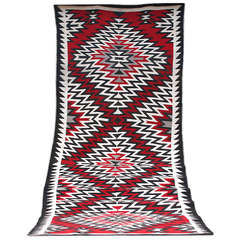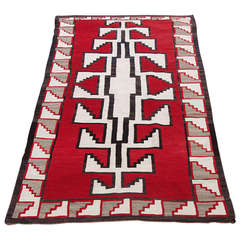Native American Runner
Early 20th Century American Native American Native American Objects
Wool
Vintage 1920s American Native American Indian Rugs
Wool
Vintage 1910s American Native American Indian Rugs
Wool
Vintage 1940s American Native American Indian Rugs
Wool
Recent Sales
Vintage 1930s American Native American North and South American Rugs
Wool
Vintage 1930s American Native American Indian Rugs
Mid-20th Century American Navajo Native American Objects
Wool
Late 20th Century American Navajo Native American Objects
Wool
Early 20th Century American Adirondack Native American Objects
Wool
Vintage 1940s American Native American Objects
Wool
Vintage 1940s American Native American Objects
Wool
Vintage 1920s Mexican Adirondack Native American Objects
Wool
Mid-20th Century American Native American North and South American Rugs
Wool
Vintage 1930s American Native American North and South American Rugs
21st Century and Contemporary American Rugs
20th Century Turkish Native American Turkish Rugs
Wool
Mid-20th Century American North and South American Rugs
Wool, Cotton
Antique Early 1900s American Native American North and South American Rugs
Wool
Vintage 1930s American Native American North and South American Rugs
Wool
Vintage 1930s American Native American North and South American Rugs
Early 20th Century American Native American North and South American Rugs
Vintage 1920s North American Native American North and South American Rugs
Wool
People Also Browsed
Mid-20th Century American Navajo North and South American Rugs
Wool
Antique Late 19th Century American Navajo Rugs
Wool
Early 20th Century American Navajo Rugs
Wool
Antique Early 19th Century North American Navajo Rugs
Wool
Early 20th Century American Navajo Tapestries
Yarn
Mid-20th Century North American Navajo Rugs
Wool
Antique Early 19th Century American Navajo North and South American Rugs
Wool
Early 20th Century American Navajo North and South American Rugs
Wool
Antique 1890s American Native American Quilts and Blankets
Wool
20th Century American Native American Rugs
Wool
Antique 1880s American Native American Indian Rugs
Wool
Antique Late 19th Century American Navajo North and South American Rugs
Wool
Antique 1890s American Navajo Native American Objects
Wool
Vintage 1910s North American Navajo Indian Rugs
Wool
Vintage 1930s American Native American Indian Rugs
Wool
Vintage 1920s American Native American Indian Rugs
Wool
Native American Runner For Sale on 1stDibs
How Much is a Native American Runner?
Finding the Right Rugs And Carpets for You
Good antique rugs and vintage rugs have made their way into homes across the globe, becoming fixtures used for comfort, prayer and self-expression, so choosing the right area rug is officially a universal endeavor.
In modern usage, “carpet” typically denotes a wall-to-wall floor cushioning that is fixed to the floor. Rugs, on the other hand, are designed to cover a specific area and can easily be moved to new locations. However, the terms are interchangeable in many parts of the world, and, in the end, it won’t matter what you decide to call it.
It’s well known that a timeless Persian rug or vintage Turkish rug can warm any interior, but there are lots of other styles of antique rugs to choose from when you're endeavoring to introduce fresh colors and textures to a bedroom or living room.
Moroccan Berber rugs are not all about pattern. In fact, some of the most striking examples are nearly monochrome. But what these rugs lack in complexity, they make up for in brilliant color and subtle variation. Moroccan-style interiors can be mesmerizing — a sitting room of this type might feature a Moroccan rug, carved wooden screens and a tapestry hung behind the sofa.
Handwoven kilim rugs, known for their wealth of rich colors and unique weaving tradition, are pileless: Whereas the Beni Ourain rugs of Morocco can be described as dense with a thick surface or pile, an authentic kilim rug is thin and flat. (The term “kilim” is Turkish in origin, but this type of textile artistry is practiced all across the Balkans, throughout the Arab world and elsewhere.)
When it comes to eye-catching floor coverings, the distinctive “medallion” pattern of Oushak rugs has two types of rounded shapes alternating against a rich red or blue background created with natural dyes, while the elaborate “star” pattern involves large eight-pointed shapes in diagonal rows alternating with diamonds.
If you’re looking for something unexpected, find a runner rug that pops in your hallway or on your stairs. Dig for dazzling geometric patterns in our inventory of mid-century modern rugs and carpets, which includes works designed by the likes of Swedish textile masters Märta Måås-Fjetterström, Marianne Richter and other artisans.
Carpets and rugs have been around for thousands of years. Prehistoric humans turned to animal skin, wool and fur to craft simple fabrics to soften hard terrain. A 2016 study suggests that "cave lions" were hunted for exactly this purpose, and that decorating your cave with their pelts may have conferred strength and prestige. Although many of these early textiles are still in existence, tracing their precise origins is difficult. Carpets quickly became such a valuable trade commodity that the weavings could easily travel far from their places of origin.
The oldest known carpet was found in southern Siberia. (It may have traveled there from Persepolis in Iran.) For the flat-weave floor rugs crafted by Native Americans, cotton was the primary material before sheep’s wool was introduced in the 16th century. In Europe, carpet-making was fundamental to folk art, and Asian carpets imported to European countries were at one time considered a precious luxury and not intended to remain permanently on the floor.
With the variety of area rugs and carpets rolled out for you on 1stDibs — a collection that includes traditional, modern, minimalist rugs and other coverings of all kinds — things will be looking up whenever you’re looking down.
- 1stDibs ExpertOctober 12, 2021A Native American artifact is any object that provides insight into the lives and history of native people in America. These items range from carved stone pipes, weapons for hunting, tools for cooking, pottery, jewelry and more. Find a collection of artifacts on 1stDibs today.
- 1stDibs ExpertNovember 13, 2024To identify Native American beadwork, first consider the materials. Indigenous American artisans often produce beads out of glass and natural materials, such as shells, bone and wood, and use metal and plastic in their pieces less frequently. Older pieces will usually be held together by sinew, while newer examples will typically feature thread. Regardless of age, Native American beadwork will typically be expertly crafted, so pieces usually have tight, even stitching with no visible gaps. Familiarizing yourself with stitching techniques used by various tribes can also be helpful. You can find images of authentic beadwork on trusted online resources to refer to as you complete the identification process. Alternatively, you can have a certified appraiser or experienced antique dealer evaluate your piece. On 1stDibs, shop a wide variety of textiles and garments that feature Native American beadwork.
- 1stDibs ExpertApril 5, 2022To identify Native American baskets, you can research the patterns using authoritative online resources to try and determine which tribe produced it. However, many replicas exist and there are many tribes that produced baskets. As a result, it is a good idea to consult a licensed appraiser. On 1stDibs, find a variety of expertly vetted Native American baskets.
- 1stDibs ExpertApril 5, 2022What Native American drums are called varies by type. Ones designed to rest in the player's lap are hand drums, while instruments that hold water used primarily by the Iroquois and Yaqui are water drums. Large freestanding drums that produce loud percussive sounds are powwow drums. The Aztec and Hopi used foot drums. You'll find a range of Native American drums on 1stDibs.
- 1stDibs ExpertApril 5, 2022Native American slippers are called moccasins. Moccasins are characterized by their U-shaped puckered toe design and are crafted with various leathers such as sheepskin or buffalo. They may or may not be decorated with beading. Shop a collection of authentic moccasins from some of the world’s top sellers on 1stDibs.
- 1stDibs ExpertApril 5, 2022It depends on which region the beads were made since they were created out of available materials found in the land around them. In the Eastern Woodlands, white and purple marine shell beads were called “wampum”. You can shop a collection of Native American beadwork from some of the world’s top boutiques on 1stDibs.
- 1stDibs ExpertApril 5, 2022The most well-known Native American blankets come from Navajo weaving, which are prized by collectors worldwide. Originally utilitarian, the Navajo people began creating blankets specifically for export and tourism in the 19th century. Shop a collection of Navajo blankets from some of the world’s top sellers on 1stDibs.
- 1stDibs ExpertApril 5, 2022What a Native American headdress represents depends on what tribe produced it. In general, headdresses may symbolize a person's status within the tribe or serve as a sign of bravery during battle. You'll find a selection of Native American headdresses on 1stDibs.
- 1stDibs ExpertApril 5, 2022There are a wide array of different dolls made by the various tribes of Native American peoples. Some of the most well-known are the kachinas made by the Navajo, Hopi and Pueblo peoples. Shop an array of Native American dolls on 1stDibs.
- 1stDibs ExpertApril 5, 2022What Native Americans used to produce baskets varied from tribe to tribe. Generally, craftsmen used whatever materials were readily available. In the Northeast, sweet grass was a common material, while pine needles and wicker are frequently found in baskets produced by tribes in the Southeast. Find a range of vintage and antique baskets on 1stDibs.
- 1stDibs ExpertApril 5, 2022In the Native American language of Powhatan spoken by the Algonquian indigenous people, moccasin refers to a hand-sewn suede bootie. Today, people may call any shoes that feature stitched round toes by the name. Shop a variety of moccasins on 1stDibs.
- 1stDibs ExpertApril 5, 2022To tell if Native American jewelry is real, have it evaluated by a licensed and experienced appraiser. Because every tribe has its own designs and identifying characteristics, it is usually not possible to determine authenticity using only online resources. Find a collection of expertly vetted Native American jewelry on 1stDibs.
- 1stDibs ExpertMay 5, 2023A number of Native American tribes are known for pottery, including the Cheyenne, Cherokees, Hopi, Iroquois, Navajo Pueblo and Shoshone. Artisans from each indigenous group have their own style. For example, Hopi pottery is often a red-brown color and decorated with black designs, while Navajo pottery is deeper brown and usually has a high-gloss finish. Find a selection of Native American pottery on 1stDibs.
- 1stDibs ExpertApril 5, 2022What rattles symbolize in Native American culture varies from tribe to tribe. Some indigenous people believe they serve as connections between the natural and spiritual worlds. Others believe they represent the ties between animals, plants and minerals. In addition, rattles sometimes symbolize independence. On 1stDibs, find a selection of Native American rattles.
- 1stDibs ExpertOctober 30, 2024Yes, some Native American jewelry is worth something. As with other types of jewelry, many pieces are made of fine materials, such as sterling silver, turquoise, jasper and lapis lazuli. Jewelry produced by Native American artists may also have value based on its age, style, type and other factors. Find a large selection of Native American jewelry on 1stDibs.
- 1stDibs ExpertApril 5, 2022The two types of Native American beadwork are called the “lazy stitch” or “lane stitch” and the “tack stitch” or “flat stitch”. You can shop a collection of Native American beadwork from some of the world’s top boutiques on 1stDibs.
Read More
Hechizoo’s Original Sin Rug Tempts with Shimmering Copper, Tin and Bronze
Embroidered with snakes, turtles, birds and vines, it celebrates a dazzling natural world before the arrival of Adam and Eve.
Splashy Blooms Bud and Wilt in Artist Santi Moix’s Floral Rug
The colorful design captures the natural splendor of a backyard garden.
In South Africa, Rich Mnisi Is Taking Biomorphic Design to the Next Level
The rising fashion star is having his first solo show of furniture designs, at Southern Guild in Cape Town, and his far-out, snaking forms are like nothing you've ever seen.
The Artists and Designers behind Today’s Coolest Rug Collaborations
Top carpet companies are expanding the arena of artful floor coverings, seeking out creatives from other media and marrying their talents to textiles.
Tantuvi’s New Rugs Were Inspired by the Travertine Quarries of India and the Spanish Steps of Rome
The New York–based rug designers employ earthy colors and time-honored artistry in their creations.
We’re Going Gaga for the New Sasha Bikoff Rugs
The New York interior designer found inspiration in disco culture and astrology for her debut home collection.
Paradise Is Found Underfoot in These Majestic Persian Textiles
Persian garden carpets, with their timeless beauty and unmatched craftsmanship, have an enduring appeal.
12 Mesmerizing Moroccan-Style Interiors
With their rich layers, intricate patterns and elaborate lighting, rooms with a Moroccan influence are easy to spot.
